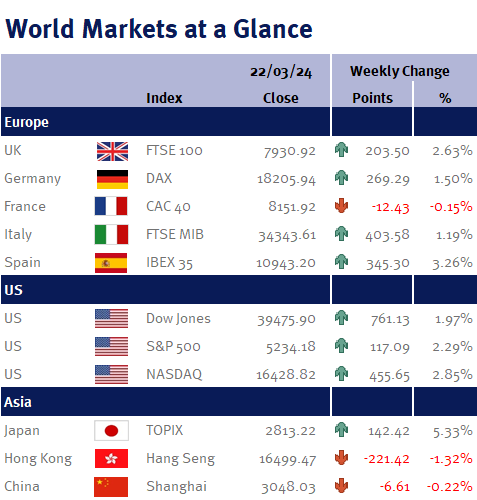In the UK the Bank of England’s Monetary Policy Committee voted by a majority of eight to one to maintain the Bank rate at 5.25%. Policymakers shifted towards a more dovish stance as two committee members dropped their previous calls for a rate hike, whilst another member called for an immediate cut.
Governor Andrew Bailey reiterated the committee’s commitment to achieving the 2% inflation target in Q2, noting that while it’s not yet time to lower rates, inflation is trending in the desired direction. Bailey noted that the labour market continues to loosen but remains relatively tight by historical standards and whilst nominal wage growth has moderated, it remains elevated. It was noted that the restrictive stance of monetary policy is starting to weigh on activity in the real economy, however, the committee need more confidence that inflation indicators are on a stable trajectory to the 2% target.
In an interview with the Financial Times, Bailey expressed growing confidence in inflation’s trajectory towards the Bank’s target. He suggested that markets were right to expect multiple interest rate cuts and emphasised the relatively minor nature of the technical recession experienced last year. UK markets reacted positively, with the FTSE 100 closing the week up 2.63%.
Also in the UK, the latest composite PMI data showed a positive trend in private sector activity, indicating growth and recovery from last year’s brief recession. Marking the fifth month of expansion, with a reading of 52.9 in March (above the 50-threshold indicating expansion), this is a promising sign for future economic stability.
Looking to Europe, in a surprise move, the Swiss National Bank (SNB)cut interest rates, making it the first major Western central bank to cut rates in this cycle, boosting hopes that cuts could be on the way for the UK soon. The SNB reduced its key policy rate by 25 bps to 1.5%, marking the first cut in nine years. The move comes after inflation fell to 1.2% in February.
The surprise cut added to markets’ positive momentum this week. We also heard from European Central Bank President Christine Lagarde earlier in the week who affirmed the likelihood of a June rate cut but stressed that “we will know a bit more by April and a lot more by June.” Beyond that, the monetary policy path is unclear.
Data wise next week, US durable goods orders and the Fed’s preferred measure of inflation PCE. Eurozone economic sentiment and final figures for UK Q4 GDP. From Japan, we have unemployment data, retail sales and industrial production.
Kate Mimnagh, Portfolio Economist



